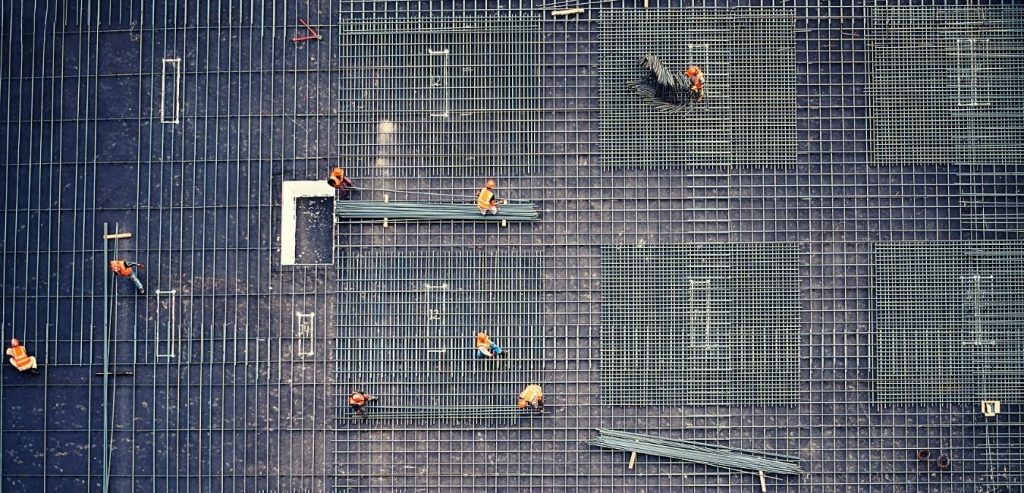All construction projects are subdivided into various activities. With each activity, there are different construction and civil works. Therefore, the total cost of construction works is a combination of all the costs of activities involved.
Table of Contents
What is rate analysis?
Rate analysis is the basis for arriving at a correct rate per unit work or supply of work specifications such as labor, materials, and equipment. It can also be defined as the analytical study that leads to the definition of unit rates of work by identifying the basic requirements.
Benefits of rate analysis
There are two significant benefits for carrying out rate analysis of an item. The first is determining the cost per unit item, while the second determines its economic processes and uses.
Importance of rate analysis
Rate analysis gives a well-defined picture of tools, services, and machinery involved in the construction of a project.
Rate analysis helps in proportioning the effect of the market on the payments made for construction work. It also helps in determining the construction costs per unit as stipulated in the specifications. The use of rate analysis makes it possible to come up with uniform standards for construction works.

How do you calculate rate analysis?
Five factors play a pivotal role when calculating rate analysis. These are
- Material costs
- Labor costs
- Equipment costs
- Overheads
- Contractor profits
Material costs
When determining the material costs, you need to determine purchase prices, storage prices, transportation costs, and wastages due to excesses. These rates are resolved from the current market rates.
Labor costs
When determining the labor costs, we determine the amount of labor required per unit measurement of a construction project. The numbers are then multiplied by the relevant applicable wages to get the labor costs per unit.
Equipment costs
There are different machinery employed in construction work. If machinery is used for construction work, the cost will be added to the activity cost involved. For instance, we will add a concrete mixer to the cost of preparation of concrete. However, if a machine is used for different types of work, a separate budget is reserved for them.
Overheads
The costs of overheads are also inclusive during rate analysis. These include office, rent, furniture, wages, and contingencies. The charges are about 5% of the overall costs. Taxes are also included in overheads as 6% of taxes have to be paid prior.
Contractor’s profit
A contractor’s profit of about 10% is included in the overall costs in overall project cost. The profit is about 8% in big projects and 15% in small projects.

Examples
Now let us run through some examples to understand the rate analysis of different components of a project.
Concrete rate analysis
For concrete rate analysis, we need first to organize the data we need for calculations. This includes materials, steel, craft, shuttering charge, and water charge.
We will calculate the rate for 10m3 of concrete. The Cement: Sand and Aggregate ratio is 1:2:4, whereas the density of cement is 1440kg/m3. Below is the detailed table with rate analysis calculations on concrete.
| Component | Description | Quantity | Rate in $ | Total in $ |
|---|---|---|---|---|
| Materials | ||||
| Aggregate | 8.8m3 | 25 per m3 | 220 | |
| Cement | 64 bags | 3.5 per bag | 224 | |
| Sand | 4.4m3 | 24 per m3 | 108.6 | |
| Steel | 785kg | 0.44 per kg | 345.4 | |
| Binding wires | 1.5kg | 0.65per kg | 0.98 | |
| Labor | ||||
| Mason (1st class) | 4 | 5 per day | 20 | |
| Mason (2nd class) | 3 | 4 per day | 12 | |
| Casual | 12 | 3 per day | 36 | |
| Blacksmith | 8 | 3 per day | 24 | |
| Formwork | ||||
| Timber | Lumpsum | 10 | 10 | |
| Carpenters | 10 | 2.8 per day | 28 | |
| Wastage | 6% | 62 | ||
| Transport | 1% | 10.3 | ||
| Contractor’s Profit | 15% | 154.7 | ||
| Total | $1258.5 |
Plastering rate analysis
Below we will calculate the plaster rate analysis for a 100m2 area. We will consider a 12mm thick plasterwork with a cement to sand ratio of 1:4.
| Component | Description | Quantity | Rate in $ | Total in $ |
|---|---|---|---|---|
| Labor | ||||
| Mason (1st Class) | 6.7 | 7 per day | 47 | |
| Mason (2nd Class) | 9.2 | 4 per day | 37 | |
| Casual | 7.5 | 4 per day | 30 | |
| Material | Cement | 9 bags | 2.8 per bag | 25.2 |
| Sand | 1.25m3 | 8.5 per m3 | 10.6 | |
| Wastage | 2% | 0.716 | ||
| Scaffolding | 1% | 0.358 | ||
| Transport | 1% | 0.358 | ||
| Miscellaneous | 2% | 0.716 | ||
| Water charge | 1% | 0.358 | ||
| Contractor’s profit | 15% | 5.4 | ||
| Total | 157.38 |
Labor and material rate analysis
The number of personnel and materials required in a project greatly influence the price of the project. The labor and material units are multiplied by the relevant cost per unit to calculate the appropriate rates. Below is an example of labor and material rate analysis in concrete and brickwork.
| Component | Description | Quantity | Rate in $ | Total in $ |
|---|---|---|---|---|
| Materials | ||||
| Class 1 bricks | 2500 | 0.05 per brick | 125 | |
| Class 2 bricks | 2440 | 0.04 per brick | 100 | |
| Brick ballast | 6m3 | 8 per m3 | 48 | |
| Cement | 64 bags | 2.7 per bag | 173 | |
| Steel | 785 kg | 0.44 per kg | 345 | |
| Labor | ||||
| 1st class Mason | 4 | 5 per day | 20 | |
| 2nd Class Mason | 3 | 4 per day | 12 | |
| Casual | 12 | 3 per day | 36 | |
| Carpenter | 8 | 3 per day | 24 | |
| Blacksmith | 8 | 3 per day | 24 | |
| Total | 907 |

Plumbing rate analysis
Plumbing rates depend on materials location and the plumber’s experience. Below are the average rates for the installation of plumbing fixtures.
| Component | Description | Quantity | Rate in $ | Total in $ |
|---|---|---|---|---|
| Labor | ||||
| Plumber | 5 | 25 per day | 125 | |
| Casual | 7 | 5 per day | 35 | |
| Installation | ||||
| Pump installation | 1 | 550 | 550 | |
| Toilet installation | 3 | 250 | 750 | |
| Shower | 2 | 450 | 900 | |
| Bathtub | 1 | 600 | 600 | |
| Total | 2960 | |||
| Total | 2960 |
Brickwork rate analysis
Below is the rate analysis for brickwork. We will consider a volume of 10m3 of brick for our calculations.
| Component | Description | Quantity | Rate in $ | Total in $ |
|---|---|---|---|---|
| Labor | ||||
| Mason (1st class) | 6.7 | 7 per day | 46.9 | |
| Mason (2nd Class) | 6 | 5 per day | 30 | |
| Casual | 11 | 3.5 per day | 38.5 | |
| Materials | ||||
| Bricks | 4940 | 0.05 | 247 | |
| Cement | 21 Bags | 2.8 | 58.8 | |
| Sand | 2.8m3 | 8.5 | 23.8 | |
| Scaffolding | 1% | 3.29 | ||
| Transport | 1% | 3.29 | ||
| Miscellaneous | 2% | 6.59 | ||
| Water charge | 1% | 3.29 | ||
| Contractor’s profit | 15% | 49.44 | ||
| Total | 471.5 |
Frequently asked questions
A proper understanding of rate analysis improves work productivity and eases the cost estimation process. Below are some of the commonly asked questions concerning rate analysis to give a broader scope of the subject.
When is rate analysis important?
A quantity surveyor typically uses price list items from a unit cost database to estimate the rates of a specific work description. However, builders resort to building unit rates as elementary sources of the analyzed rates when this information is not available.
What are the advantages of using rate analysis software?
Rate analysis software allows you to dynamically build rates from elementary sources to calculate total unit rates. The software makes the quantitative evaluation of rates easier through the use of inbuilt mathematical models.
Conclusion
As discussed above, rate analysis is essential in every construction project. You need to be aware of the financial concepts that directly impact your project. After realizing the cost impacts on your projects, you can use the results from rate analysis to prepare a budget and a monthly schedule for your project.

